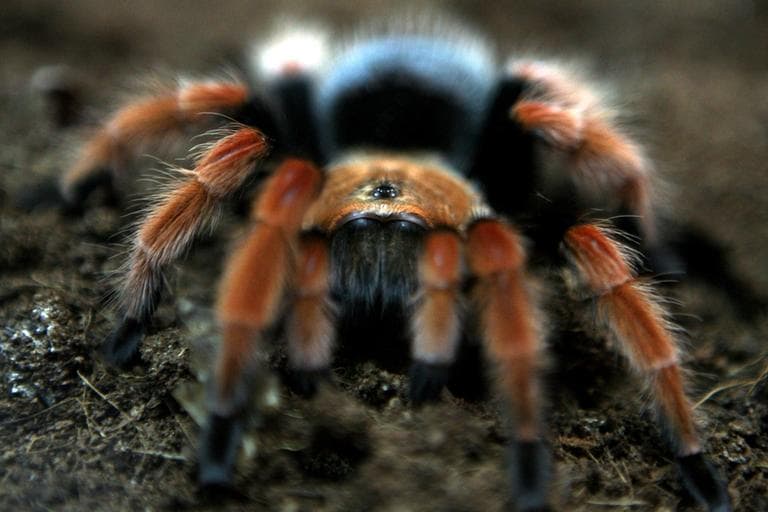Advertisement
The Amazing World of Spiders
ResumeBlack widows, orb weavers, the brown recluse. We go to the amazing world of spiders.

We all know the eensey-weensey spider went down the water spout. But for a lot of us, that’s about all we know about spiders. They’re around. They spin webs. They have a lot of legs and make some people shriek.
A big new exhibit at the American Museum of Natural History goes way on in to the spider story, with the fishing spider and the golden orb-web spider and the goliath bird eater spider – a spider as big as your hand. It’s got the story of spider venom and spider silk – stronger than steel! – and why we need spiders.
This hour, On Point: the amazing world of spiders.
- Tom Ashbrook
Guests
Norman Platnick, curator of the American Museum of Natural History’s new exhibit, Spiders Alive!
Hazel Davies, Manager of Living Exhibits at the American Museum of Natural History.
Markus Buehler, Professor, Material Scientist and Engineer at MIT. He studies how the structure of spider silk can inform manmade technology and construction.
From Tom's Reading List:
Wired "Spiders: love them or hate them, they are an important part of our ecosystem by helping to keep the insect population in check. It is estimated that the spiders in 1 acre of woodlands consume 80 pounds of insects a year. Spiders come in a wide variety of shapes and sizes and an estimated 43,000 species of spiders exist."
New York Times "In a workroom on the fifth floor of the American Museum of Natural History in New York, six tarantulas are about to undergo sensitivity training. The creatures, of a desert species called Chilean rose hairs for their tinted furry legs, are expected to have a starring role in a new exhibition, “Spiders Alive!”, that opens in late July."
CBS "A woman reportedly checked into a Chinese hospital because of an itchy ear that had bothered her for almost a week, only to find out a spider had taken up residence in her ear canal."
Video: Spiders Alive!
This video from the American Museum of Natural History explains what you'll see at "Spiders Alive!"
http://www.youtube.com/watch?v=FTpgfJD-CcM
Photos
Click through the slideshow below to check out some of the spider species you can see at the Natural History Museum and a graphic of spider web structure from our guest Markus Buehler.
This program aired on August 16, 2012.